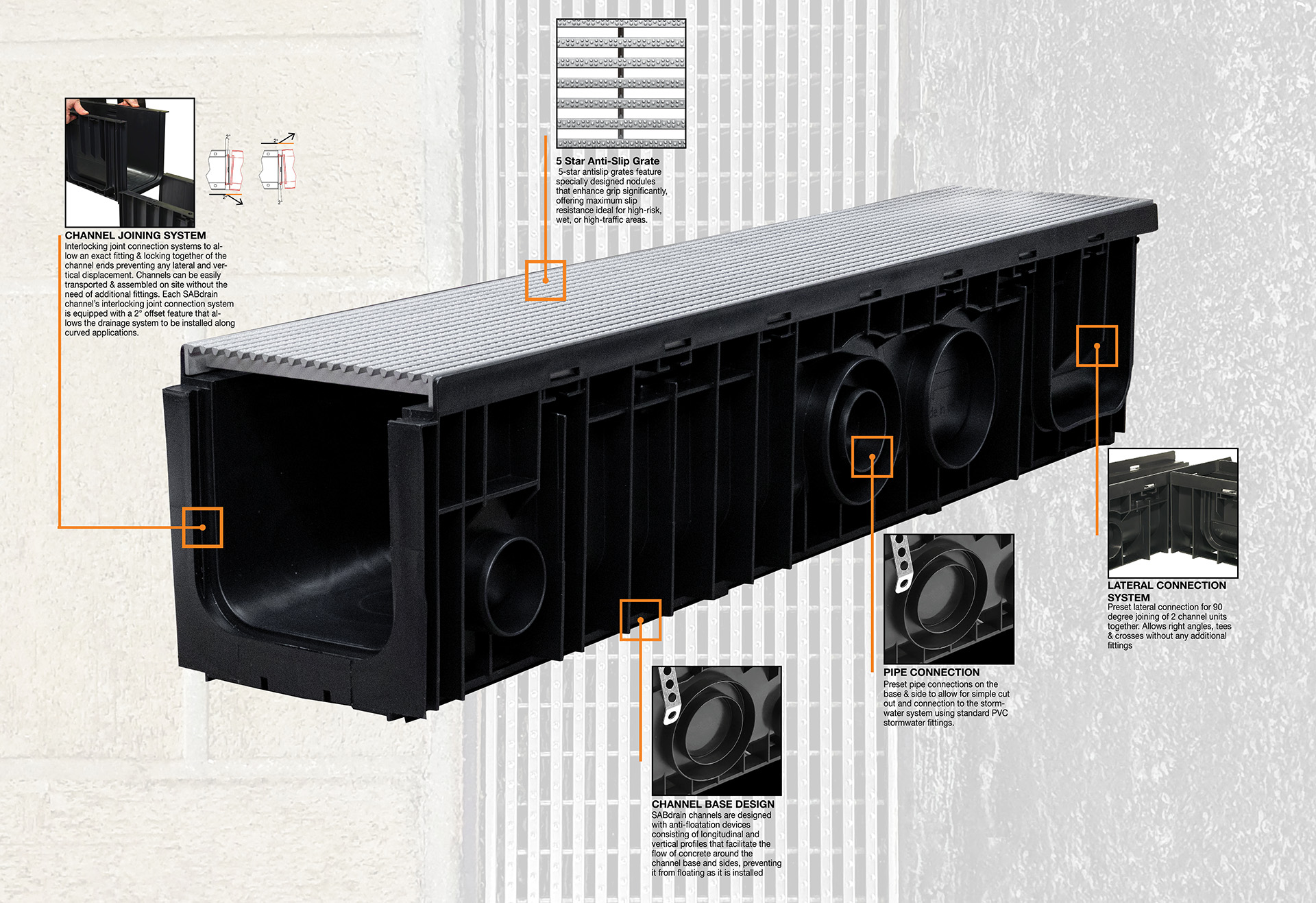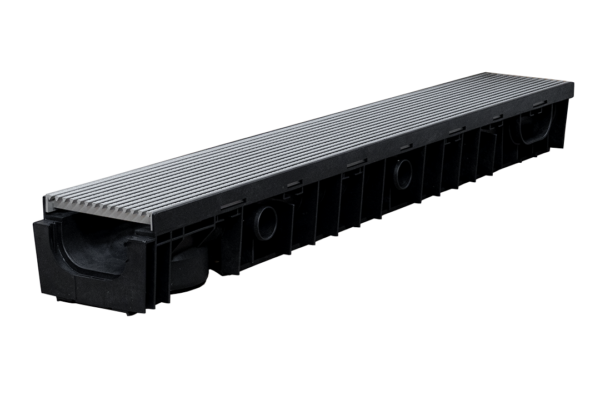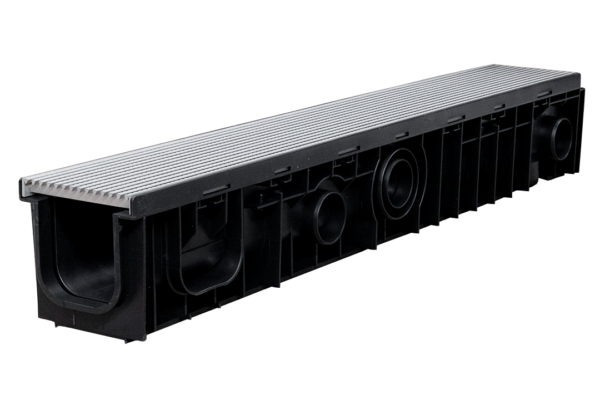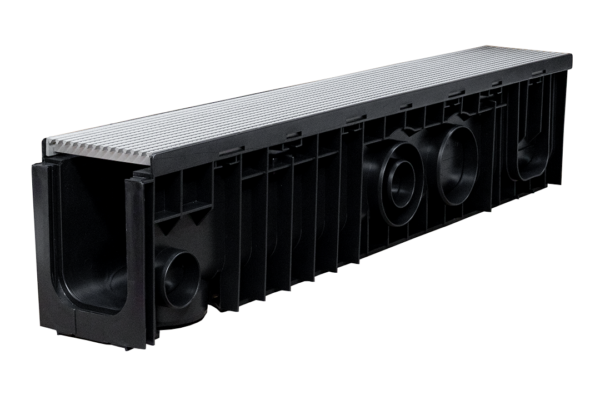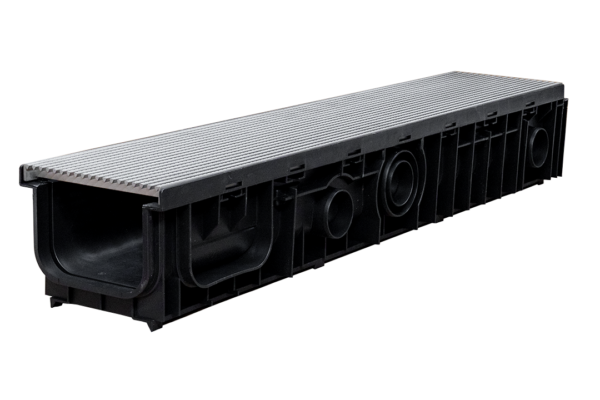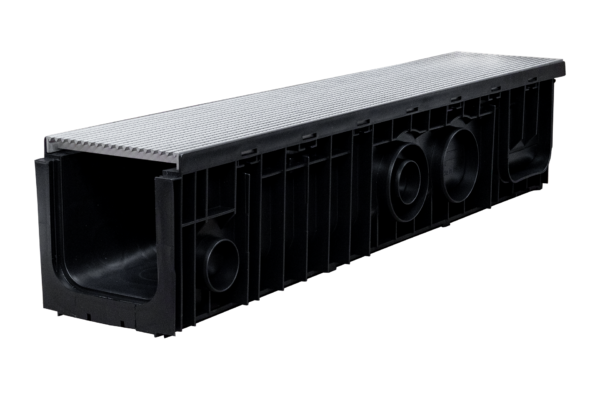Polypropylene channel with Class A rated 316 stainless steel anti-slip, heel guard grates. 5 Star anti-slip nodules provide exceptional slip resistance and enhancing the safety of the system. SABdrain 922 is designed for and recommended for pools, pathways & more.
922 – 5 Star 316





Drains
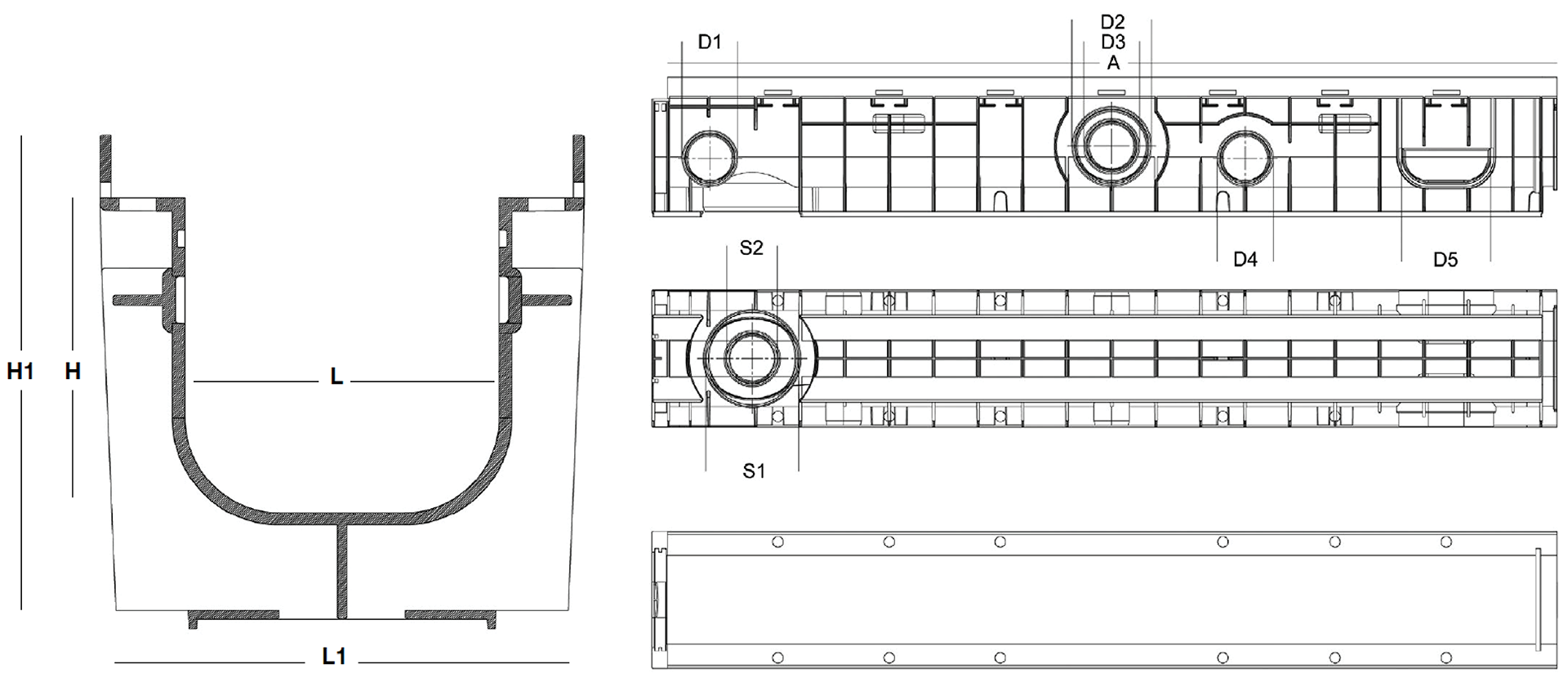
Drains
| Product Code | L | H | L1 | H1 | D1 | D2 | D3 | D4 | D5 | S1 | S2 | A | KG |
|---|---|---|---|---|---|---|---|---|---|---|---|---|---|
| DR92210050 | 100 | 50 | 150 | 100 | 40 | - | - | 40 | 100 | 63 | 110 | 1000 | 7.2 |
| DR922100100 | 100 | 100 | 150 | 150 | 63 | 90 | 63 | 63 | 100 | 110 | 63 | 1000 | 7.5 |
| DR922100150 | 100 | 150 | 150 | 200 | 63 | 110 | 63 | 110 | 100 | 110 | 63 | 1000 | 7.9 |
| DR922150100 | 150 | 100 | 200 | 150 | 63 | 90 | 63 | 63 | 150 | 110 | 63 | 1000 | 8.5 |
| DR922150150 | 150 | 150 | 200 | 200 | 63 | 110 | 63 | 110 | 150 | 110 | 63 | 1000 | 9.8 |
Grates

Grates
| Code | Material | Drain Cm² | A | H | H1 | L | F | Load Class | KG |
|---|---|---|---|---|---|---|---|---|---|
| DR922GRATE100 | Stainless Steel | 650 | 147 | 20 | - | 1000 | 38 X 5 | Residential, A | 4 |
| DR922GRATE150 | Stainless Steel | 900 | 197 | 20 | - | 1000 | 38 X 5 | Residential, A | 5.15 |
Frequently
Asked Questions
What is 5 star antislip?
The difference between standard antislip and 5-star antislip grates lies in the slip resistance level: while regular antislip grates provide basic traction, 5-star antislip grates feature specially designed nodules that enhance grip significantly, offering maximum slip resistance ideal for high-risk, wet, or high-traffic areas. Below image shows 922 (5 Star) on the left and 952 on the right.

Will stainless steel rust?
Despite its anti-rust properties, you may see some stainless steel that appears to have rust on the surface. This is known as tea staining. Tea staining is rust forming on the surface of stainless steel, causing a discolouration similar to a tea stain. It may not look appealing, tea staining is only cosmetic and does not affect the functionality or integrity of the stainless steel. Regular cleaning and maintenance with a mild soap and water solution can remedy the discolouration.
What is the difference between 304 and 316 stainless? Which should I use?
A 304 stainless steel drainage grate and a 316 stainless steel drainage grate differ primarily in their composition and corrosion resistance. 304 stainless steel is a versatile and commonly used grade known for its excellent corrosion resistance in various environments, making it suitable for many applications.
316 stainless steel contains higher levels of chromium and additional elements like molybdenum, which enhance its resistance to corrosion, particularly in harsher conditions such as marine environments or exposure to chloride-containing solutions.
Within a kilometre of breaking surf, 316 stainless is recommended to be utilised. Additional care will still need to be undertaken to prevent tea staining. See more about the maintenance of stainless steel here.
Should grates be installed before concreting?
Yes, it is extremely important to prevent bowing when concreting. It is impossible to install a grate if the channel has bowed after concrete has set.
A great tip is to use a temporary grate (like timber) to avoid concrete spill on the grates if possible. Ensure there is no bolts/lockdown that needs to be secured before concreting)
